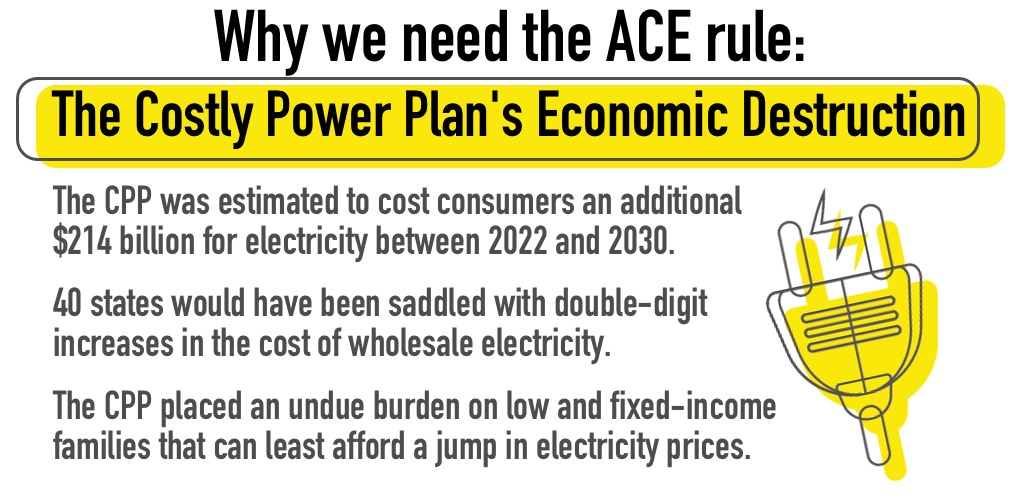
The ACE Rule is Right on Target
The final Affordable Clean Energy (ACE) rule is reportedly coming in June. It will replace the Clean Power Plan (CPP), bringing much-needed regulatory certainty and an approach to reducing emissions that, notably, doesn’t torpedo the economy.
Any analysis of the ACE rule requires a comparison with the rule it’s replacing; or rather, the problems it’s fixing. The EPA was unenviably forced to build the ACE rule from the rubble of the CPP’s failure after it collapsed under the weight of its regulatory overreach. Challenged in court by a majority of states, its implementation was stayed by the U.S. Supreme Court. If the CPP was defined by overreach, ACE is the personification of careful, legally-sound restraint. Here are the key differences between the two rules:
- The ACE Rule is Lawful: The very architecture of the Costly Power Plan was its undoing. It abandoned 45 years of legal interpretation of the Clean Air Act (CAA) that limited its authority to regulating discrete sources of emissions within the fence line. In other words, the CAA allows the EPA to regulate emissions from individual power plants, not mandate the rebuilding of entire state grids as the CPP proposed to do. This unlawful approach ran into its legal Waterloo when the Supreme Court issued a historic stay in 2016. The ACE rule, on the other hand, returns to a within-the-fence-line approach, respecting legal precedent and returning the EPA to the boundaries of its rulemaking authority under the CAA.
- The ACE Rule Returns Authority to the States: A majority of states challenged the CPP in court, believing it exceeded the EPA’s regulatory authority (it did). The CPP forced a one-size-fits-all approach on states, dictating a sweeping overhaul of their electricity grids with fuel switching, off-site energy efficiency and renewable energy requirements. The ACE rule, conversely, establishes a national best system of emissions reduction and provides a suite of candidate technologies to improve the efficiency of existing power plants. Importantly, the approach puts the states back into the driver seat to construct an approach that best fits their grids and environmental goals.
- The CPP was Economically Destructive: The ACE rule provides a proven path to emissions reductions but does so – unlike the rule it’s replacing – without imposing crippling costs on consumers. While ACE will provide hundreds of millions of dollars in net benefits, the CPP was estimated to cost consumers an additional $214 billion for electricity between 2022 and 2030. More than 40 states would have been saddled with double-digit increases in the cost of wholesale electricity. Sixteen states would have been particularly hard hit, facing wholesale power price increases in excess of 25 percent. The CPP was also regressive, placing an undue burden on low and fixed-income families that can least afford a jump in electricity prices. Coal country would have been gutted. According to the Energy Information Administration’s analysis of reduced demand for coal under the plan, coal-related employment would have fallen by 127,000 high-wage jobs by 2040.
The ACE rule is a very welcome return to a lawful approach to emissions reduction. It puts to bed the destructive regulatory overreach of the previous administration and returns authority to the states, where it belongs. Instead of burdening households and businesses with incredible costs, the ACE rule leans on proven, cost-effective technology solutions to pursue emissions reductions without compromising the affordability of the nation’s electricity supply. Where the Costly Power Plan missed so badly, the Affordable Clean Energy rule is right on target.
- On May 22, 2019
